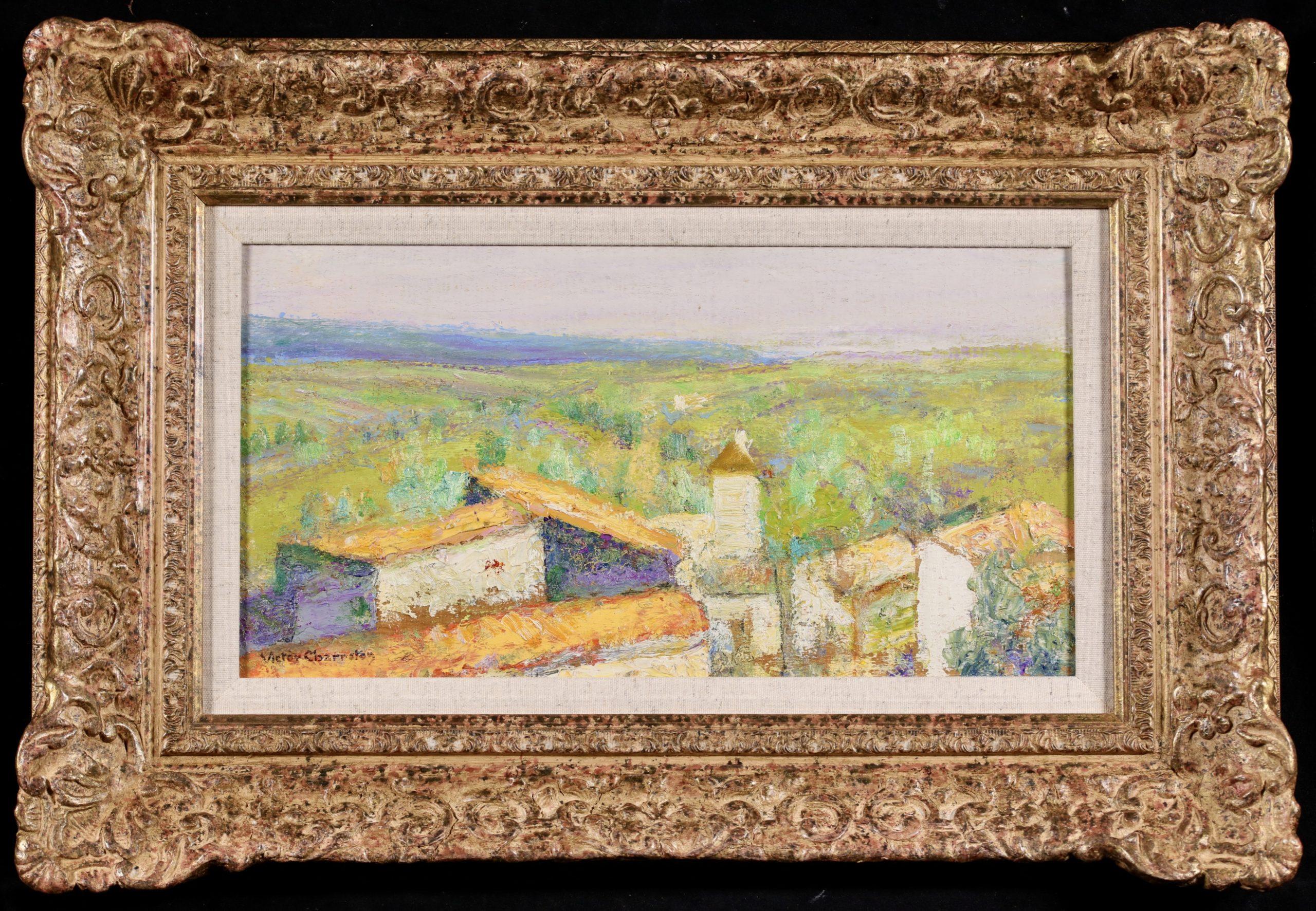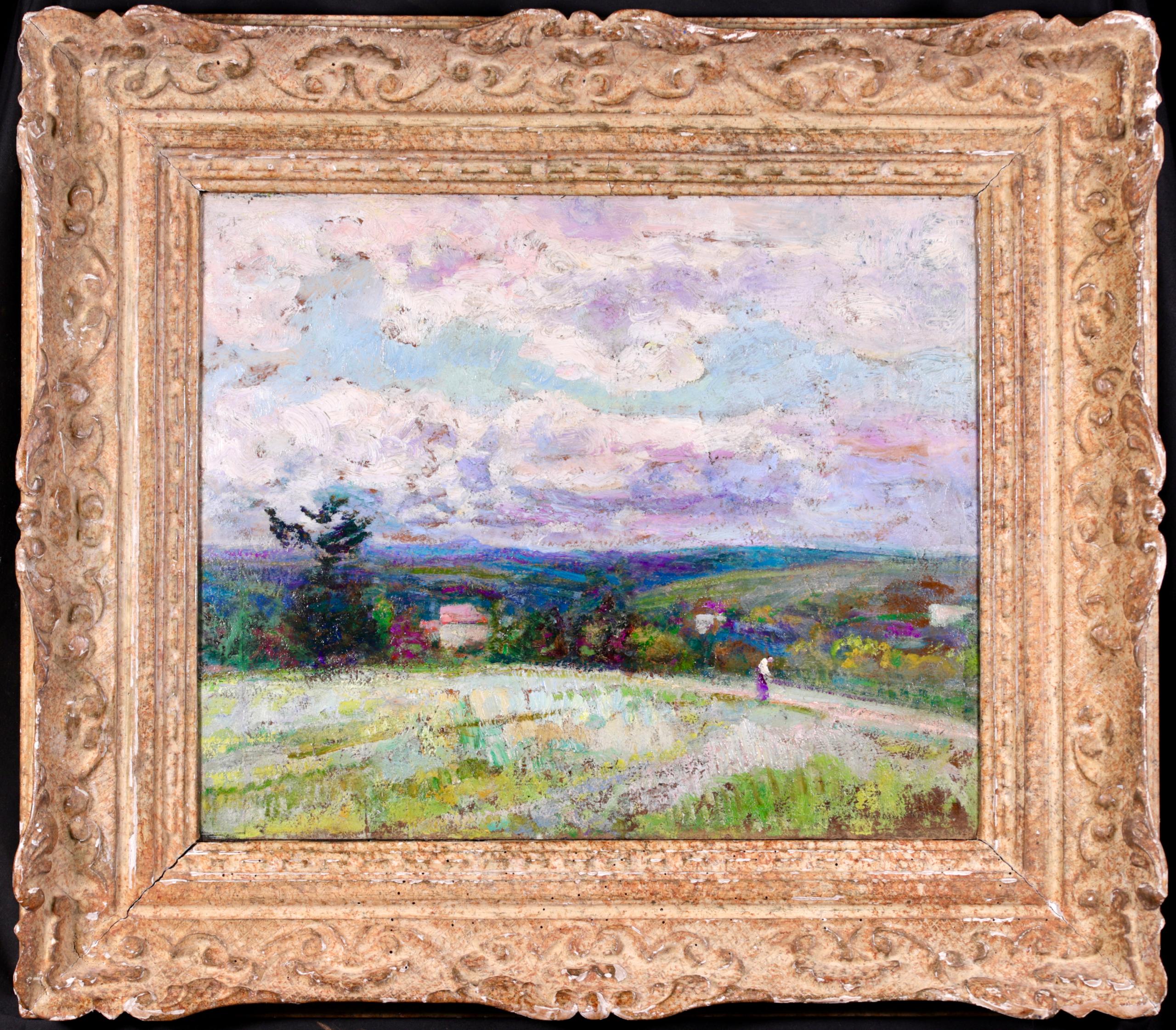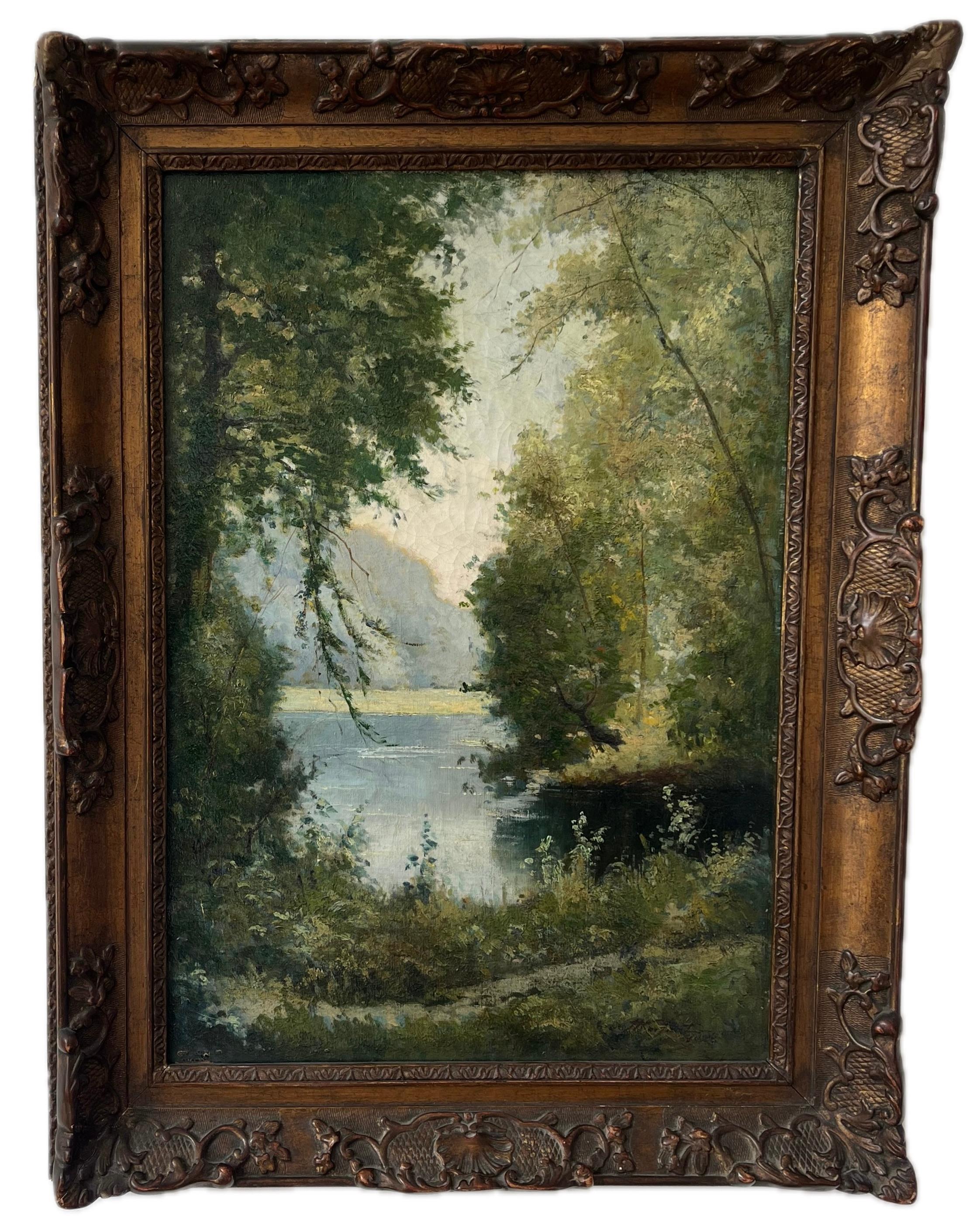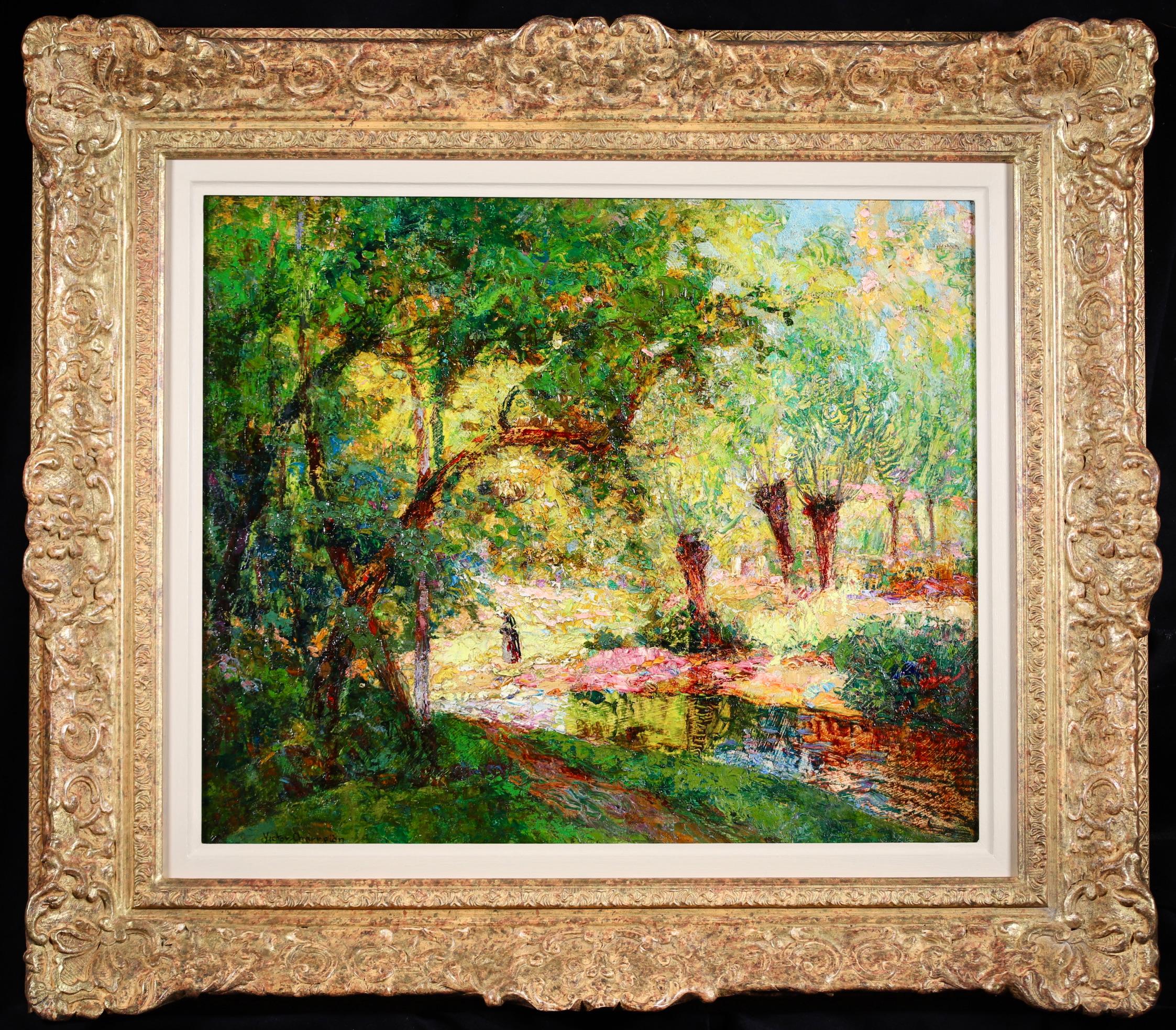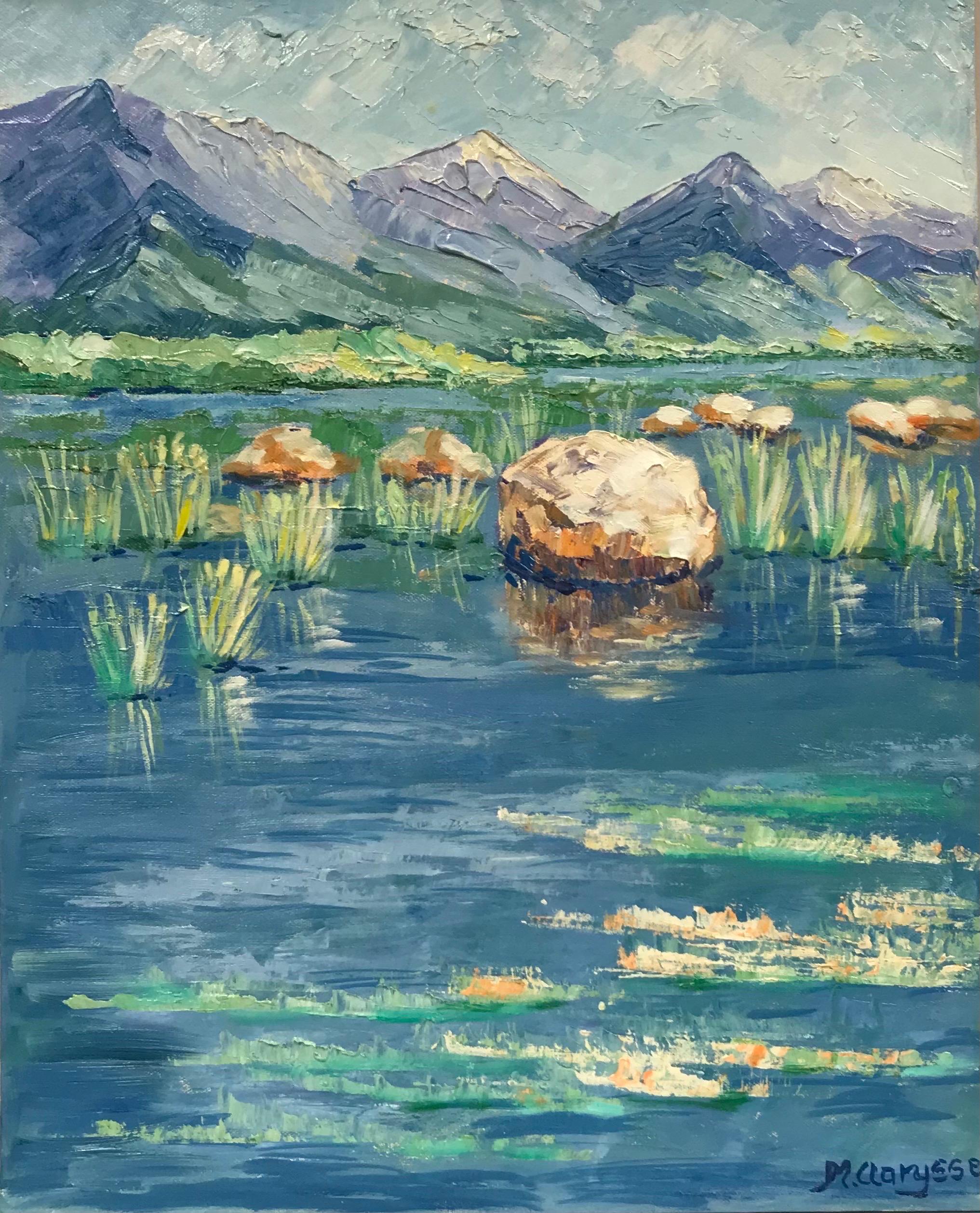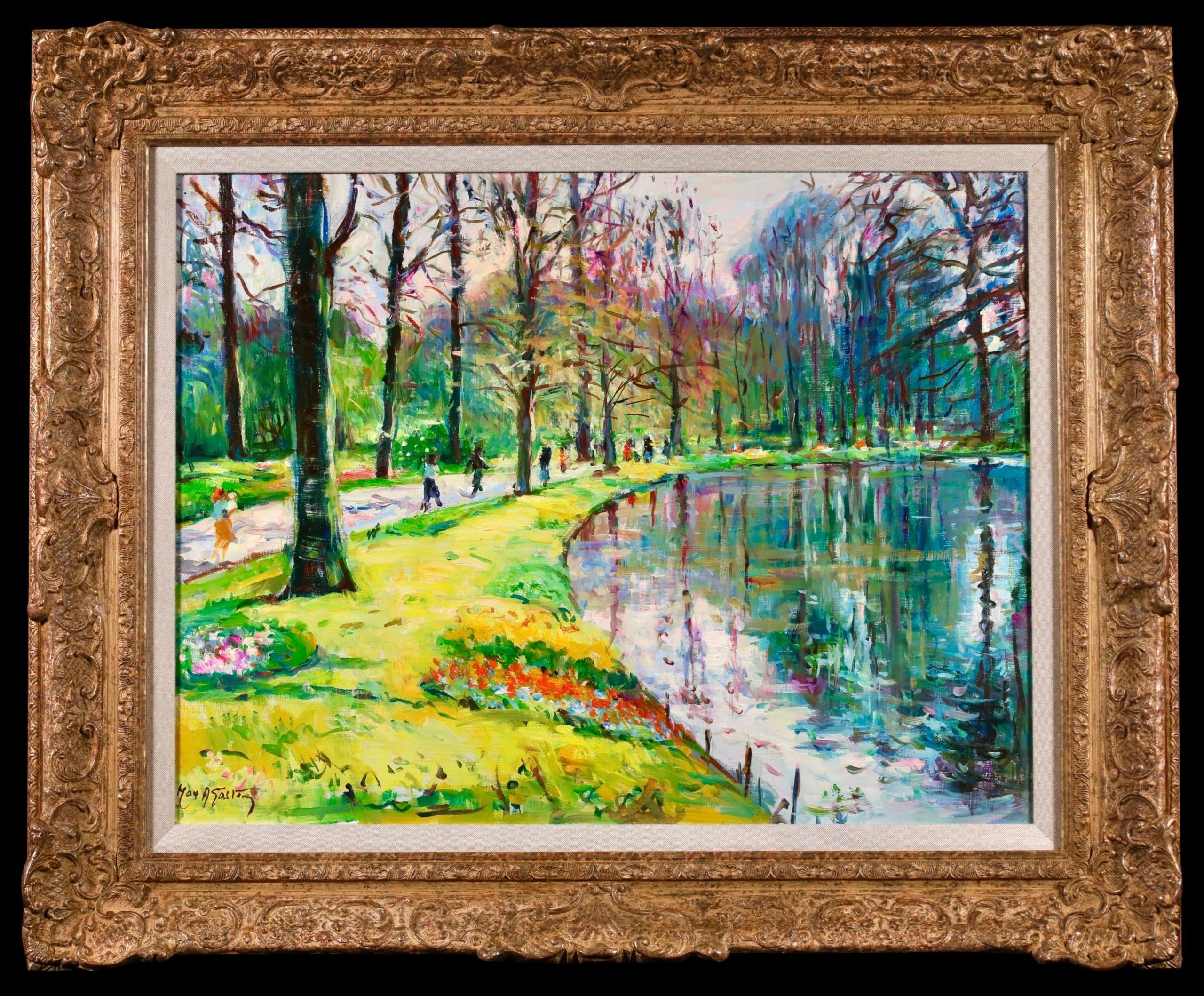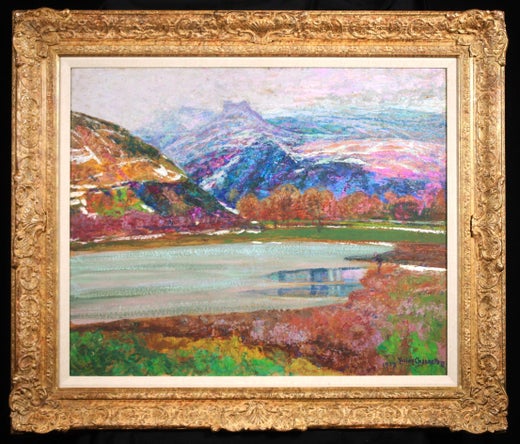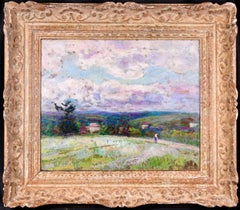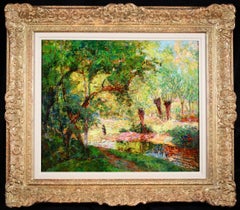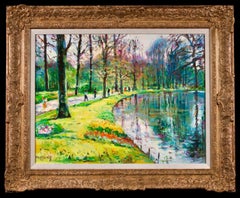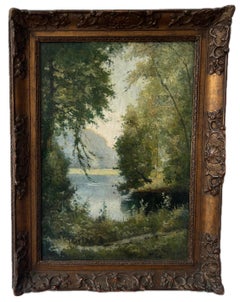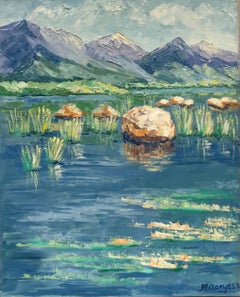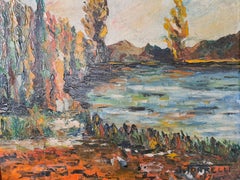Victor CharretonLac du Chambon - Gele - Post Impressionist Landscape Oil by Victor Charreton1917
1917
About the Item
- Creator:Victor Charreton (1864-1937, French)
- Creation Year:1917
- Dimensions:Height: 31 in (78.74 cm)Width: 36 in (91.44 cm)
- Medium:
- Movement & Style:
- Period:
- Condition:Very good original condition.
- Gallery Location:Marlow, GB
- Reference Number:Seller: LFA00151stDibs: LU415314565192
Victor Charreton
Victor Charreton was the son of a surveyor. He spent his childhood in Chaumont and went to school in Bourgoin. In 1885 he began studying law at Grenoble University and in 1892 became a solicitor at the Lyons Court of Appeal. He had been creating paintings since childhood and was given advice by Ernest Hareux (he did not merely read his treatise on painting, which was highly regarded at the time) and also later by Louis Japy.
In 1902 Charreton gave up his legal career to devote his time to painting. The same year he moved to Paris. Every summer, from 1912 onwards, he would spend time at his house in St-Amant-Tallende near Clermont-Ferrand, where his wife came from. He also traveled abroad — to Algeria in 1905, to Spain and England in 1912 and to Belgium and Holland in 1913 — visiting numerous museums along the way. He also visited Corsica and Germany. He led the life of an aesthete and man of culture and was a lover of poetry and music. In 1914 he was made a Chevalier of the Légion d'Honneur.
Charreton was a landscape artist in the Lyons tradition with a love of sensual impasto. In his works he sought to capture fleeting, momentary effects, like those achieved by the Impressionists: effects at different times of day and in different seasons, such as dusk and snow. As a young man he painted the environs of Bourgoin, but his marriage in 1893 took him to Auvergne where he painted the characteristic landscapes of the region. Landscapes of Auvergne make up approximately two-thirds of Charreton’s output. What became known as the School of Murols, named after a village in Auvergne, was principally formed around him between 1910 and 1925. Skilled in capturing minute changes in the weather, he was also adept at capturing the spirit of new places.
Beside his native Dauphiné and his adopted Auvergne, Charreton was also charmed by the landscapes of the Île-de-France and Paris — Montmartre, the Jardin du Luxembourg and the Parc Montsouris — and also Provence, Creuse and Brittany. However, no trace has been found of his trips abroad. It would be a misjudgment to think that Charreton only painted pretty picture-postcard scenes in the regions he visited; on the contrary, he would seek out the intimist qualities of a place, choosing perhaps a quiet hamlet, with a humble bridge over an anonymous stretch of water, or an ordinary tree outside a tumbledown house.
Charreton would paint blazing autumn landscapes, with a sumptuous color palette, but also favored snowy scenes, their exact chromatic opposite. At the start of his career he would paint dusky scenes and contre-jours in halftones and misty sunsets. As Charreton’s artistic development progressed, he attached more and more importance to light and color. In this respect his work follows on from that of Ravier and, like Guillaumin, it is almost a precursor to Fauvism, or alternatively can be regarded as complicit with it, like the work of Maurice Marinot. Charreton’s brushwork evolved in tandem with his use of color, which became ever more vibrant; for example his fondness for purple hues and later his striking color contrasts. His brushwork became more conspicuous and he would suppress the insignificant details in order to bring out the forms that made up the general composition.
Among art historians Charreton is not ranked alongside the innovators who succeeded the Impressionists, like Gauguin, Seurat, Van Gogh or Cézanne. Older than Matisse, who was himself already by far the eldest of the Fauves, Charreton stopped short of what he considered to be their excesses. He placed himself at the crossroads between two centuries: the end of the century of Impressionism and the start of the leaps made by Fauvism. His life and the major themes in his work are evidence of this, but he decided to be a regional painter; as such, his talent and qualities are clearer than they may otherwise have been if he had chosen a more ambitious career. Beside his painting, he also wrote a play in three acts entitled The Montrouge Well (Le Puits de Montrouge), which was performed in Bourgoin in December 1883.
Charreton made his debut at the Lyons Salon in 1894 with Morning in Montpeyroux. That same year he began exhibiting in Paris at the Salon of the Société des Artistes Français, showing October Evening. He was awarded an honorable mention in 1910, a silver medal in 1912, a gold medal in 1913 and a commendation outside the competition in 1914. He also became a member of the committee and the jury and exhibited there until his death.
Charreton took part in collective exhibitions in France — in Toulouse, Clermont-Ferrand, Roubaix and Bordeaux — and abroad, in New York, Geneva and Barcelona. In 1915 he held a solo exhibition at the Galerie Georges Petit in Paris. He exhibited in New York, Toledo, Pittsburgh, Cleveland and Japan. In 1931 Charreton inaugurated the Musée de Bourgoin by donating around 20 works; the museum then changed its name to the Musée Victor Charreton. He was also one of the founders and general secretary of the Salon d'Automne. In 1972 the Musée de Montmartre organized a posthumous retrospective exhibition of his work; in 1987 and 1989 two more were held in a Paris gallery; then in 2003 the Musée de Bourgoin-Jallieu (in Isère) held in exhibition entitled “Victor Charreton: The Public Collections.”
Find original Victor Charreton art on 1stDibs.
(Biography provided by Leighton Fine Art)
- ShippingRetrieving quote...Shipping from: Marlow, United Kingdom
- Return Policy
More From This Seller
View All1930s Post-Impressionist Landscape Paintings
Oil, Panel
1920s Post-Impressionist Landscape Paintings
Oil, Board
1910s Post-Impressionist Landscape Paintings
Oil, Board
1980s Post-Impressionist Landscape Paintings
Canvas, Oil
1920s Post-Impressionist Landscape Paintings
Canvas, Oil
1890s Post-Impressionist Landscape Paintings
Canvas, Oil
You May Also Like
Early 20th Century Impressionist Landscape Paintings
Oil, Canvas
21st Century and Contemporary Impressionist Landscape Paintings
Canvas, Oil
Mid-20th Century Impressionist Landscape Paintings
Oil
Mid-20th Century Landscape Paintings
Oil, Board
20th Century Impressionist Landscape Paintings
Oil
1970s Post-Impressionist Landscape Paintings
Oil, Board, Canvas
